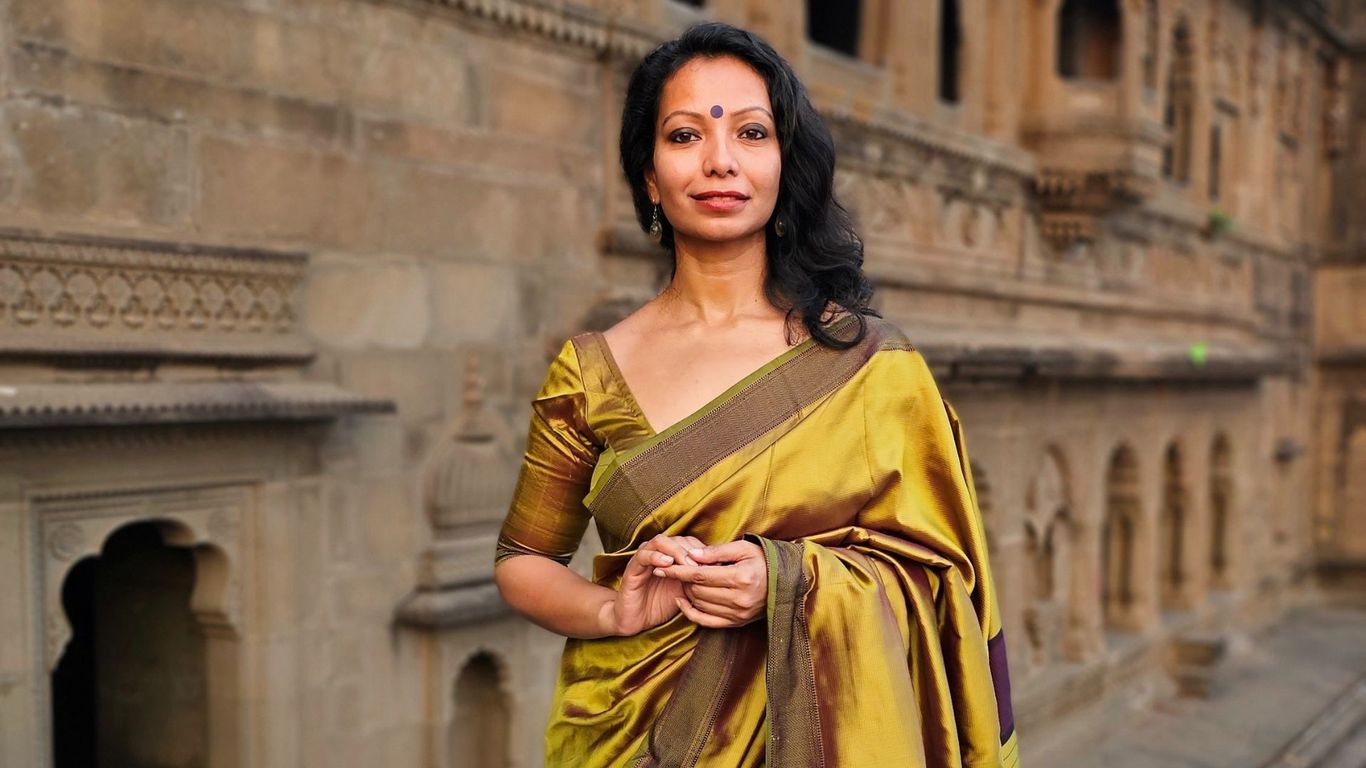
Category: INDIAN HERITAGE TEXTILE
Country: India
Region: Asia
Pritha Dasmahapatra shares the artistry, skill, and cultural legacy of the threads that bind India's textile heritage.
By Punita Malhotra
3rd January, 2024, 12:43 PM
An avid traveller who curates her itineraries, content creator Pritha Dasmahapatra focuses on the history and heritage of Indian textiles. Born in Kolkata, she has been on several textile-based trails across the country, meeting artisans and documenting their crafts. Along the way, this London-based gynaecologist has managed to spark an interest in hyperlocal tours and also helped craftspeople find patrons in India and abroad.
Excerpts from the interview with Pritha Dasmahapatra:
T+L India: Chapter one of your love story for textiles began when…

Pritha Dasmahapatra: I got my first taste of textiles when my father used to bring sarees for my mother from his work trips. I have especially fond memories of Sambalpuri and Ikat sarees from Odisha. This love just kept deepening as I grew up.
T+L India: How and when did you start travelling for textiles?
Pritha Dasmahapatra: Like many of us, towards the end of the pandemic, my perspective on life and travel changed. As an Indian who spent a decade in the UK, I decided to redirect my travel budget to India. I started exploring the world of textiles through books and visiting tourist places with rich heritage. My first textile travel was to Murshidabad and Varanasi, followed by Bishnupur. I planned out craft-based trails and went along the route without a specific formula in mind. In the summer of 2022, Kashmir became a significant trip. I developed a personal connection with shawl weavers after seeing the processes of Kani weaving and Sozni embroidery. Later, during a journey to Manipur, I discovered that every home is a weaving hub, creating a self-sufficient state with a circular economy in practice. With every trip, I came back with bagfuls of fascinating revelations.
T+L India: How do textiles tell stories of lifestyle and culture?
Pritha Dasmahapatra: Textiles often reflect the influence of agriculture and cultural elements. For instance, the Dhaniyakhali pattern of West Bengal sarees features vertical lines resembling paddy fields or date palms, showcasing the region’s connection with agriculture. Kanjeevaram sarees, originating from a temple-rich area, draws inspiration from temple architecture. Odisha’s sarees, heavily influenced by local culture, have designs like conch shells and lotus flowers associated with the region’s traditions. The Gomi Teni saree of North Karnataka exemplifies how textiles portray cultural, economic, and migratory aspects.
T+L India: The most exciting discovery you made about Indian textiles on your travels?
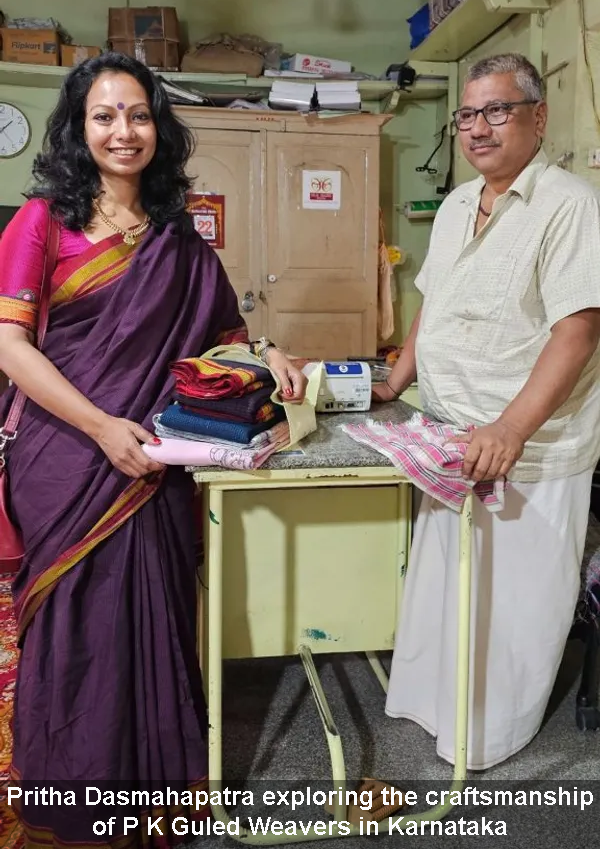
Pritha Dasmahapatra: Textiles play a crucial role in the village economy. Rural India heavily relies on textiles, making it the second-largest employer in the country, including the pre-production and post-production processes — from cotton picking to creating a single piece of textile. Until a few centuries ago, Indian textiles had a phenomenal contribution to world trade. There’s a huge global market for ready-to-wear textiles; accessibility remains an issue due to the high prices of handloom products. We need to make Indian handloom more marketable for the Western world. Both, brands and the government, need to work in tandem for this to happen.
T+L India: Which are your favourite types of Indian sarees and why?
Pritha Dasmahapatra: Initially, I believed Kanjeevaram was my favourite, but after visiting weavers in Varanasi, I was in a dilemma as to which one I loved more! I have always admired Ikat and Jamdani for their simplicity. Bengal cotton sarees, specifically Taant, hold a special place in my heart. Whatever the type of saree, I always prefer the conventional drape, covering my ankles with the pallu flowing freely. Much as I appreciate the diversity of saree drapes, I would refrain from wearing a tribal drape, because in my mind, it’s cultural misappropriation.
T+L India: Do you think Indian textiles receive the recognition they deserve?
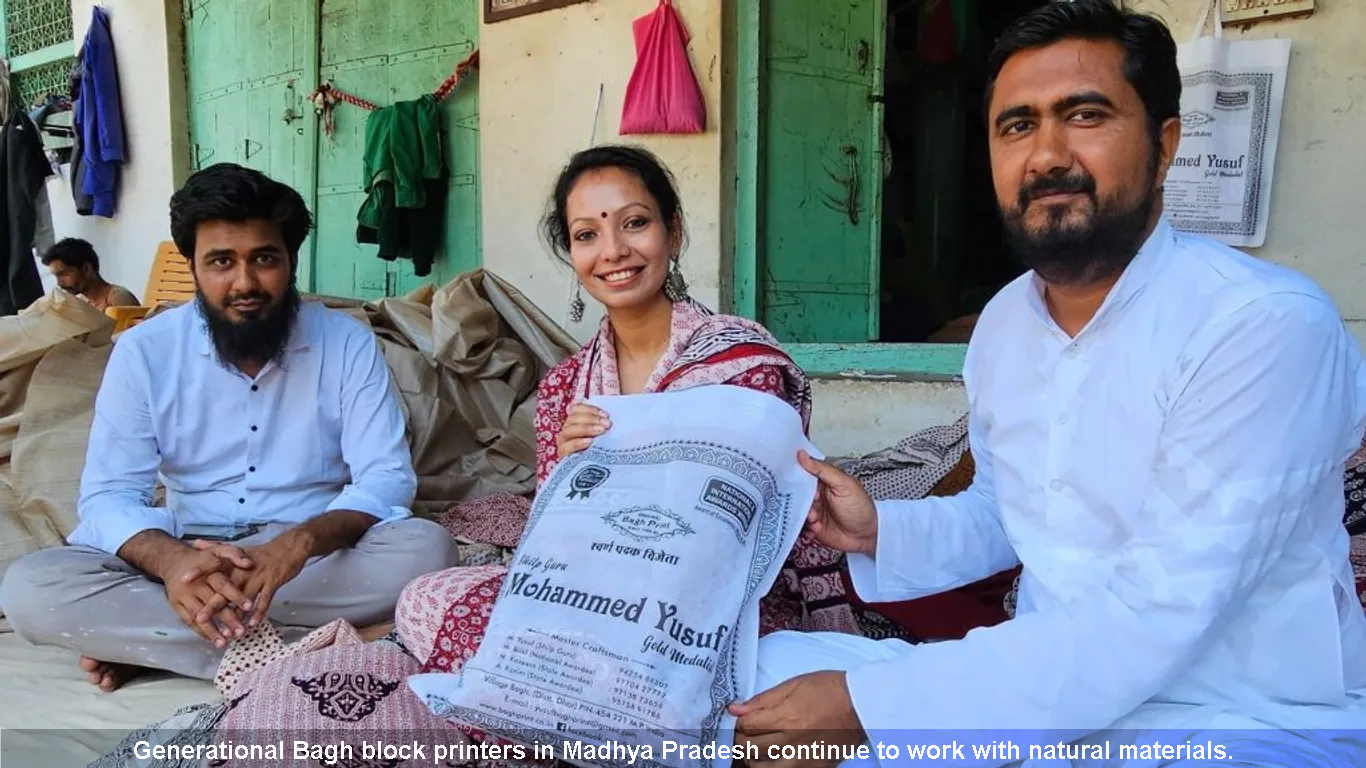
Pritha Dasmahapatra: The underrated status of Indian textiles can be attributed to a lack of advertising. Unlike other industries, weavers don’t invest in ad agencies to promote their craft. Recognition often comes when celebrities or Bollywood actors start wearing specific textiles, as was the case with the Chanderi. Regions already known for other products gain prominence more easily for their textiles and crafts. In general, I believe that as Indians, we don’t perceive handloom as exotic…and this is the reason for its under-appreciation.
T+L India: How do you view the intersection of fashion and Indian handlooms in contemporary times?
Pritha Dasmahapatra: The current focus on Indian handlooms in fashion is a welcome change, especially considering that a large population does not wear sarees, including women, men and children. It’s essential to broaden our focus from textiles to furnishings and home decor. Recognising and incorporating Indian handloom in Western wear can also enhance its appeal and create a more authentic representation.
T+L India: On Indian handloom reviving its past glory…
Pritha Dasmahapatra: The primary focus needs to be on consolidating exports to enhance the reputation of Indian handlooms. Efforts should be directed toward increasing international recognition and demand for these textiles.
T+L India: What is the most precious textile you have owned?
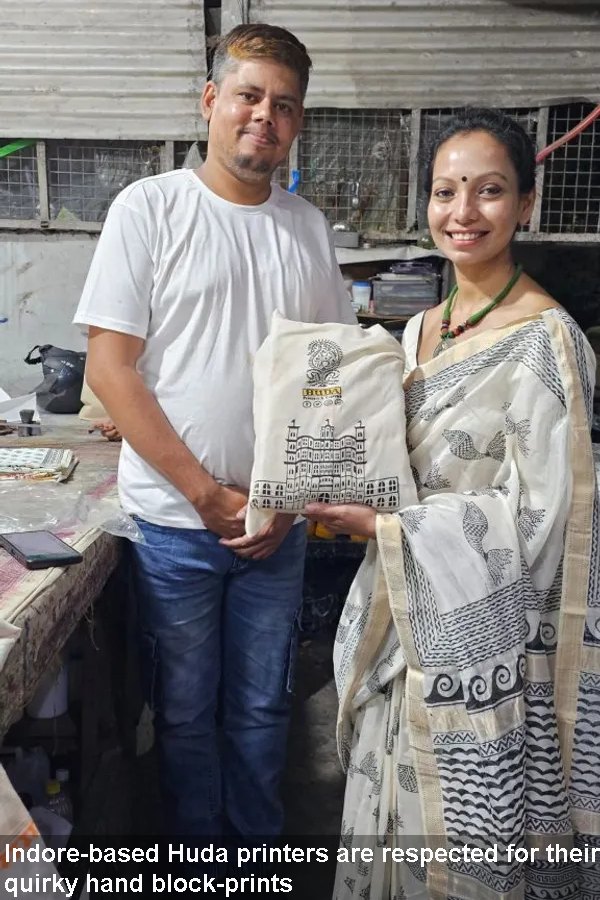
Pritha Dasmahapatra: The most precious textile I own is my mother’s wedding Benarasi saree, which is almost 50 years old. It holds sentimental value for me because I wore it as a teenager and it got a tear, which I got repaired. These days, I’m pleased to see weavers reviving vintage designs. It makes me proud to see institutions like the Victoria & Albert Museums cataloguing old Indian motifs. There are some crafts and designs that we need to preserve for posterity.
T+L India: If you could embark on a dream project related to Indian textiles, what would it be?
Pritha Dasmahapatra: My dream project would be to get involved in coordinating an initiative led by embassies and the Ministry of External Affairs to organise fashion fairs for Indian textiles in different countries.
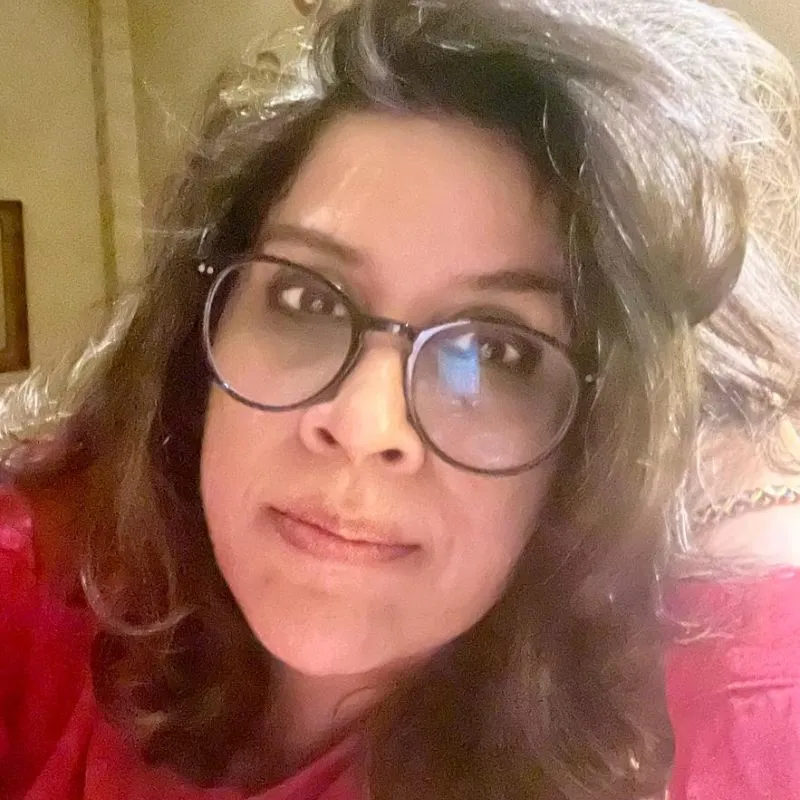 WRITTEN BY: Punita Malhotra
WRITTEN BY: Punita Malhotra
Punita shifted gears from a career in entrepreneurship and publishing to live her dream of travel and writing. Her quest for history, heritage, food and fairytales take her to faraway lands. She writes for select travel publications, including in-flight magazines. She pens her immersive, personal stories through her blog, 100cobbledroads.
Courtesy: Travelandleisureasia.com
Copyrights © 2025 GLOBAL TEXTILE SOURCE. All rights reserved.